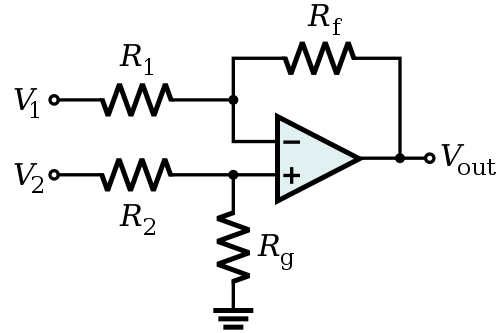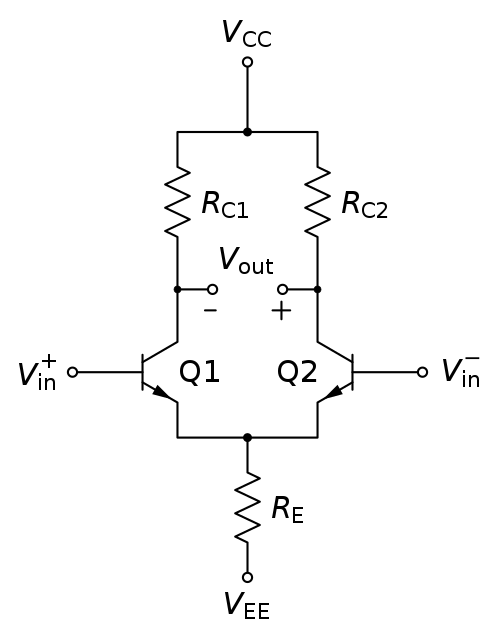You are using an out of date browser. It may not display this or other websites correctly.
You should upgrade or use an alternative browser.
You should upgrade or use an alternative browser.
Balanced phono cable
- Thread starter Tarzan
- Start date
killie99
pfm Member
yes, yes, yes and yes if you're using a low output MC (I have an Phono RS also), I bought one from Yanis Tome - much lower noise, but then it might be that my standard phono lead was crap! I bought a SILVERCORD PLUS Pure, solid OCC Silver – StarQuad tonearm cable - 1m - DIN-XLR from him for a very reasonable £108 earlier this year. This is a link to the phono version - I asked him to make me a balanced one and it was no problem. http://rover.ebay.com/rover/1/710-5...0001&campid=5338728743&icep_item=222446946465
This site contains affiliate links for which pink fish media may be compensated.
Arkless Electronics
Trade: Amp design and repairs.
Ideally you want an overall screened twisted pair cable (for each channel) with the "hot and cold" going via the twisted pair and the screen earthed.
Julf
Facts are our friends
Ideally you want an overall screened twisted pair cable (for each channel) with the "hot and cold" going via the twisted pair and the screen earthed.
I don't really like the "hot" and "cold" terminology - it makes people think along the "signal and return" lines of unbalanced connections. I prefer "+" and "-" or even better "non-inverting" and "inverting".
Arkless Electronics
Trade: Amp design and repairs.
I don't really like the "hot" and "cold" terminology - it makes people think along the "signal and return" lines of unbalanced connections. I prefer "+" and "-" or even better "non-inverting" and "inverting".
Same here but was trying to be more "lay person friendly"
Julf
Facts are our friends
Same here but was trying to be more "lay person friendly"
Fair enough
Tarzan
pfm Member
yes, yes, yes and yes if you're using a low output MC (I have an Phono RS also), I bought one from Yanis Tome - much lower noise, but then it might be that my standard phono lead was crap! I bought a SILVERCORD PLUS Pure, solid OCC Silver StarQuad tonearm cable - 1m - DIN-XLR from him for a very reasonable £108 earlier this year. This is a link to the phono version - I asked him to make me a balanced one and it was no problem. http://rover.ebay.com/rover/1/710-5...0001&campid=5338728743&icep_item=222446946465
Killie is your rig balanced from phono amp to main amp also?
This site contains affiliate links for which pink fish media may be compensated.
Julf
Facts are our friends
Killie is your rig balanced from phono amp to main amp also?
Balanced source isn't as important as the differential input stage at the receiving end. You get most benefits even if the source isn't balanced.
Arkless Electronics
Trade: Amp design and repairs.
Balanced source isn't as important as the differential input stage at the receiving end. You get most benefits even if the source isn't balanced.
Just for balance... I would say the opposite. Not that I think there is any advantage to balanced anyway for domestic audio... but low level signals such as from a cartridge would most benefit from the common mode noise cancellation of balanced.
If by " differential input stage at the receiving end" you mean a balanced to unbalanced conversion stage, often a monolithic instrumentation amp, then they are an issue yes... That's 3 op-amps added to the signal path just to go from balanced to unbalanced. Genuinely balanced circuitry is usually better!
Julf
Facts are our friends
Just for balance... I would say the opposite. Not that I think there is any advantage to balanced anyway for domestic audio... but low level signals such as from a cartridge would most benefit from the common mode noise cancellation of balanced.
If by " differential input stage at the receiving end" you mean a balanced to unbalanced conversion stage, often a monolithic instrumentation amp, then they are an issue yes... That's 3 op-amps added to the signal path just to go from balanced to unbalanced. Genuinely balanced circuitry is usually better!
There is a clear advantage - avoiding ground loops. And why would you need to add 3 op-amps? If you already have one op amp in the input circuit, it will have an inverting input too, so no added components are needed at all. If the input stage is discrete, you need one extra transistor - and it is only "in the signal path" in the same way as the single-ended one is.
Arkless Electronics
Trade: Amp design and repairs.
There is a clear advantage - avoiding ground loops. And why would you need to add 3 op-amps? If you already have one op amp in the input circuit, it will have an inverting input too, so no added components are needed at all. If the input stage is discrete, you need one extra transistor - and it is only "in the signal path" in the same way as the single-ended one is.
We'll have to agree to disagree
Julf
Facts are our friends
We'll have to agree to disagree
I would still like to hear why you think you need 3 op-amps (or more than one extra transistor for that matter). It is fine to disagree on matters of opinion, but some things are not matters of opinion.


Arkless Electronics
Trade: Amp design and repairs.
No you don't need more than one op amp or an extra transistor and I didn't say you did....but both are poor methods of doing it.
Most monolithic "line receivers" use 3 op amps internally in the classic instrumentation amp topology (which is what I would also use rather than the single op amp circuit you show above) and this is the most common method of adding a balanced input.
Most monolithic "line receivers" use 3 op amps internally in the classic instrumentation amp topology (which is what I would also use rather than the single op amp circuit you show above) and this is the most common method of adding a balanced input.
Julf
Facts are our friends
No you don't need more than one op amp or an extra transistor and I didn't say you did....but both are poor methods of doing it.
Why?
Most monolithic "line receivers" use 3 op amps internally in the classic instrumentation amp topology (which is what I would also use rather than the single op amp circuit you show above) and this is the most common method of adding a balanced input.We are not talking about line receivers, we are talking about audio amps, right?
Arkless Electronics
Trade: Amp design and repairs.
An IC with a 3 op amp instrumentation amplifier topology is often described as a line receiver.
Julf
Facts are our friends
An IC with a 3 op amp instrumentation amplifier topology is often described as a line receiver.
I am used to the term in the context of differential data transmission lines. Neither the ones for data use, nor the ones for audio require 3 opamps, one is more than enough.
As one example, take the reasonably popular Analog Devices SSM2143 differential (audio) line receiver:

Just one op-amp.
Arkless Electronics
Trade: Amp design and repairs.
No 3. For good ones. And that's as far as I'm discussing this with you. Byeee....
Julf
Facts are our friends
No 3. For good ones. And that's as far as I'm discussing this with you. Byeee....
Thank you for the rational and fact-based discussion.

